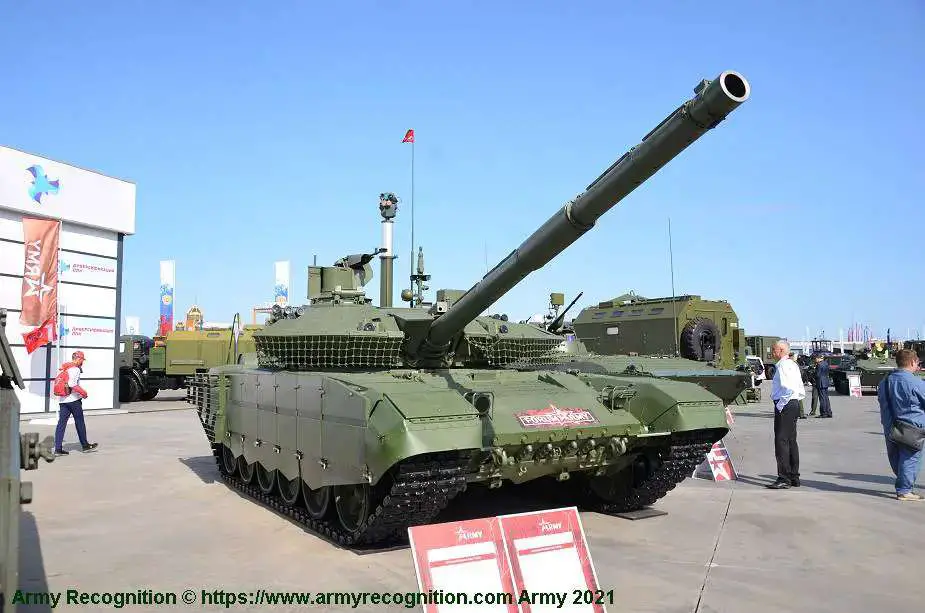As the Russia-Ukraine conflict intensifies, a curious trend is becoming apparent: Russia is experiencing increasing losses of its sophisticated T-90M tanks. While this may appear to be a disadvantage for Russia and an advantage for Ukraine at first glance, the situation is far from straightforward. The uptick in T-90 casualties is actually in line with the growing number of these tanks being deployed to the front lines.
Follow Army Recognition on Google News at this link

The uptick in T-90 casualties is actually in line with the growing number of these tanks being deployed to the front lines (Picture source: Army Recognition)
The Russian army has lost more than 2,100 tanks since the start of the conflict in February 2022, or two-thirds of the tanks it initially fielded. This forced Russia to reactivate older models like the T-72 Ural, T-62, and T-54/55, often without significant improvements. However, the loss of T-90s is not necessarily a sign of Russian weakness; rather, it reflects the increased number of deployed T-90s. Basically, Russia is losing more T-90s because it has more T-90s to lose.
According to a tweet by Special Kherson Cat on September 15, 2023, Russia has lost its 40th T-90M tank since the beginning of the war in Ukraine, with each tank valued at approximately $4.5 million. These cumulative losses amount to at least $180 million worth of military assets.
The loss of T-90 tanks may seem like a vulnerability for Russia, but rather it is a calculated risk that comes with increased deployment. For Ukraine, the situation is more serious. The inability to produce new tanks leaves them dependent on foreign aid, which has been limited. The adaptability of the Russian tank industry poses a significant challenge for Ukraine, making the conflict increasingly asymmetric in terms of armor capabilities.
While Russia has been able to adapt and even thrive under the circumstances, the same cannot be said for Ukraine. The Malyshev factory in Kharkiv, Ukraine's main tank factory, has not produced a new tank in three decades. Instead, it focuses on reactivating and upgrading old Soviet-era tanks. This leaves Ukraine dependent on foreign donations, which have been relatively rare. By comparison, Russia could potentially produce enough new T-90Ms in six months to surpass Ukraine's entire inventory of modern Western tanks.
The T-90M Model 2017 Proryv-3 is an upgraded version of the T-90MS Main Battle Tank developed by Uralvagonzavod. Designed with improvements in protection, mobility, and firepower, the tank underwent testing during the Zapad-2017 military exercise. Russia had ordered a total of 400 T-90M tanks, with deliveries beginning in 2018.
The T-90M is equipped with a 125 mm 2A46M-4 smoothbore gun capable of firing standard ammunition and anti-tank guided missiles, such as the Refleks (NATO Code AT-11 Sniper-B). Its secondary armament includes a 7.62 mm coaxial machine gun and a remotely operated weapon station with a 12.7 mm heavy machine gun. The tank also features advanced protection systems like Relikt Explosive Reactive Armor (ERA) and RPG metal netting, enhancing its survivability on the battlefield.
Powered by a V-92S2 engine generating 1,000 hp, the T-90M exhibits impressive mobility with a maximum road speed of 60 km/h and a range of 550 km. It is also equipped with critical combat systems, including NBC protection, fire detection and suppression systems, and a modern fire control system.















